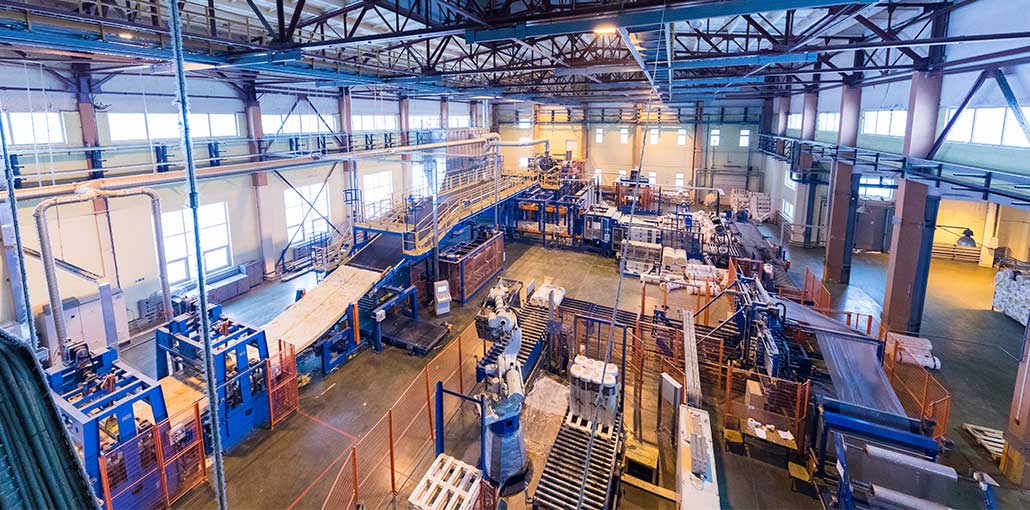How an Automated Storage and Retrieval System Can Optimize Various Operations Before implementing an automated storage and retrieval system (AS/RS), you should understand some of its applications and how the system will integrate with your enterprise’s existing production processes. This allows you to get the most out of your warehouse modernization investment, as your facility will benefit from increased productivity, lower costs, and optimized storage space.
What is an automated storage and retrieval system?
Automated storage and retrieval systems (AS/RS) are warehouse solutions that utilize technology to store and retrieve loads from specified locations automatically. There are various types of AS/RS, ranging from smaller systems to larger computer-operated systems that are completely integrated into a manufacturing operation.
Types of AS/RS systems
When choosing a system for your warehouse, it’s important to understand the similarities and differences of each type so you can make an informed decision about what’s best for your operation.
The types of AS/RS systems include:
- Vertical and horizontal carousel modules
- Vertical lift modules
- Crane-based mini load
- Vertical buffer modules
- Robotic shuttle systems
- Robotic cube storage
- Floor robots (AMRs and AGVs)
AS/RS warehouse system applications
AS/RS systems are implemented in various areas to streamline processing and picking in a warehouse. Although most commonly used in manufacturing and distribution operations, many other operations can benefit from AS/RS.
Also read: What is SAP Business Warehouse?
AS/RS can be used in the following ways:
1. Goods-to-person for order picking and packing
One of the most time-consuming processes in the order fulfillment cycle is picking and packing orders. However, AS/RS streamlines this process with goods-to-person (GTP) picking.
Workers don’t move back and forth between product locations to pick orders with a GTP picking system. Implementing a GTP AS/RS automates order picking by retrieving goods from storage and delivering them to the operator of the pick/pack station.
2. Staging orders for shipping
E-commerce has led to a market where consumers want products delivered as quickly as possible. These high demands are tricky for warehouses because there are still shipping window constraints even if they process orders around the clock.
To alleviate these constraints, a company can use an AS/RS warehouse system to stage orders in buffer storage until the shipping window is open. This saves time and allows your facility to produce continuously.
3. Maintenance and repair parts
Maintenance and repair inventory rooms are often tucked away in the corner of a facility and torn apart when someone needs something urgently.
Quick access to maintenance, repair, and spare parts is critical to a productive operation. Implementing AS/RS in your MRO stockrooms will increase storage capacity, improve inventory tracking, and streamline part accessibility.
4. Storage
An AS/RS can store materials in a way that optimizes available space over the long term. With this system in place, you can automate your long-term storage of products and retrieve what you need when you need it.
You can benefit from your AS/RS even more if you integrate it with warehouse management software, which will use FIFO, LIFO, expiration dates, packaging requirements, lot numbers, etc., to streamline inventory storage.
5. Buffering
In a supply chain setting, different tasks take different periods to complete. If not properly managed, a slowdown in any stage can slow down your entire operation. Buffering should prevent this situation by ensuring enough product is always available in different stages.
AS/RS streamlines the buffering process, allowing your warehouse to organize buffer product and retrieve it as needed efficiently. Depending on your operation, the buffer management system can be placed in multiple locations, including staging, storing, and order consolidation.
6. Assembly
AS/RS warehouse systems benefit assembly lines since they maximize control and synchrony. They are most advantageous in manufacturing facilities where high volumes of items are moved in and out continuously. Upgrading to an AS/RS allows you to boost throughput and productivity with secure storage that mitigates product damage while ensuring a safe and ergonomic work environment.
7. Managing the inventory for returns and replenishment processes
Handling returned goods is a tedious and time-consuming process. Implementing a flexible GTP storage and retrieval system allows returned items to be managed like other forms of inbound shipping with optimized restocking and routing to reduce costs, labor, and storage space.
8. Kitting
Manual kitting can take up a large amount of floor space, and operators must travel through multiple aisles to find specific items or kits. Implementing an AS/RS to store individual goods and completed kits ensures that your kitting operation is high-density and efficient.
Also read: Order Management: What It is, Process and Importance
What should you consider when choosing an AS/RS system?
Each facility has a different specialty, layout, demand rate, and number of employees, which is why AS/RS is not a one size fits all solution.
Before choosing an AS/RS solution, you should consider:
The products you manufacture/warehouse
Large-load AS/RS solutions are best equipped for goods that require increased security, climate control, or loads that do not need frequent attention from the operator.
The required storage depth within the racking system
Many AS/RS racking systems are a single pallet deep, but some can hold two or more pallets.
The height of your facility
AS/RS can be up to 100 feet high, so you will want to choose the height of your system based on your facility’s vertical height.
Your total ROI of an AS/RS
Determine your ROI by calculating what you’re saving on additional leased space and labor compared to the cost of implementing an AS/










Leave a comment